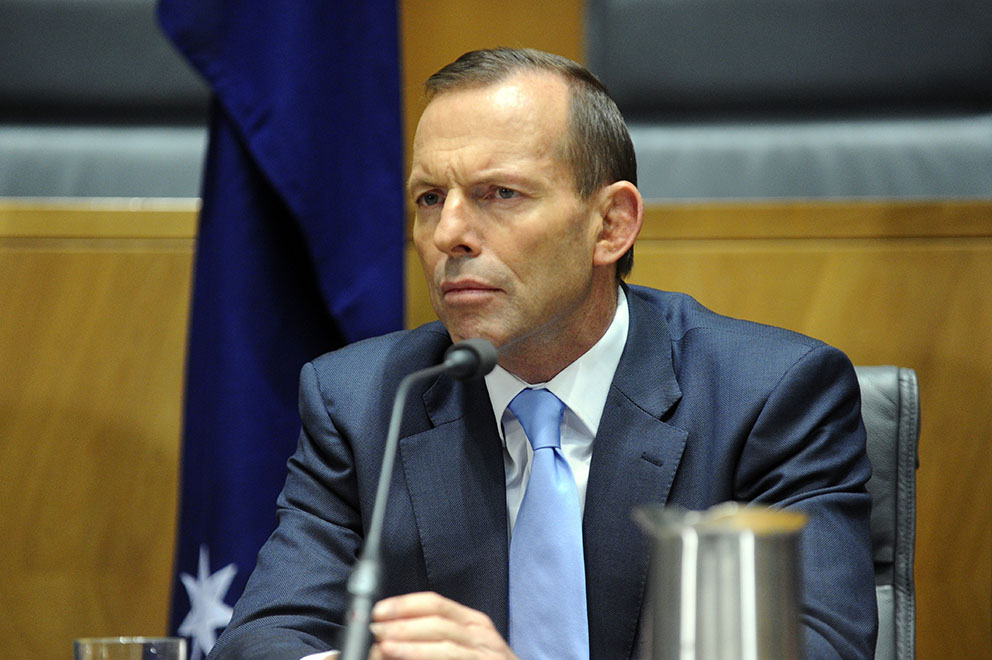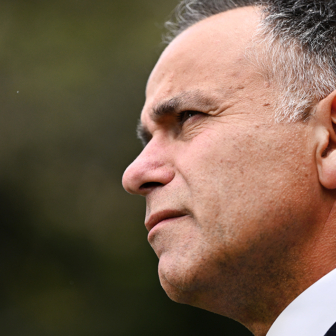Three months after an election victory might seem a strange time to be talking about a malaise within the Liberal Party. But the mishaps since Tony Abbott’s swearing-in in September point to a longer-term problem – the same problem that emerged after John Howard was elected prime minister in 1996. Howard and his colleagues weren’t forced to face up to their predicament because Australia was swept along on an international wave of economic growth and low interest rates. Tony Abbott is unlikely to be so lucky.
What these governments have in common begins with the campaigns they fought in opposition to unseat Labor. In 1996, it was overwhelmingly about getting rid of Paul Keating and everything he represented as prime minister. The Coalition’s own policies were low-key and largely innocuous. This year’s strategy was uncannily similar, with the focus this time on Julia Gillard and Kevin Rudd. What were John Howard’s plans for health, education or industrial relations in 1996? It was hard to tell. And Tony Abbott’s in 2013? Not much detail on health, a “unity ticket” on schools, no return to Work Choices. All we really knew for sure was that, Senate willing, Labor’s most contentious reforms would be ditched.
The technique didn’t start with John Howard. Malcolm Fraser’s successful campaign in 1975 was every bit as negative. Whitlam had to go, and so did his government’s landmark policies – a long list, including Medibank (the forerunner of Medicare), the Schools Commission, regional development programs and a more independent foreign policy. Fraser’s memoir even records cabinet earnestly discussing how (without wasting too much stationery) it could reverse Whitlam’s decision to relabel the Commonwealth Government as the Australian Government.
Twenty years later, in 1996, John Howard’s new government seemed flat-footed and disoriented, as if the campaign against Keating had been an end in itself (which, in a sense, it was). Once the potency of “Beazley’s black hole” began to wane, Howard went searching for a more positive issue to take to the next election – which turned out to be, of all things, the GST, although his embrace of gun control provided an anchor in the meantime. In Tony Abbott’s case, the early months have been characterised by confusion and controversy – most damagingly in relation to school funding, the response to the Indonesian spying leaks, and Scott Morrison’s secretive handling of boat arrivals.
In each case – in 1975, 1996 and 2013 – a negative election campaign delivered a very weak mandate to the incoming government. Enough voters were sick of Labor to switch their vote, but the result was scarcely a resounding expression of confidence in the Coalition.
The Gonski double-flip is a particularly vivid ilustration of what negative campaigning means once a party is in government. In a key area of public policy, education, the Abbott ministry effectively has no policy. Essentially the same can be said about health, another policy area that figures in pre-election surveys of the top two or three issues in voters’ minds.
One possible explanation for this recurring problem is that in each case the Coalition happened to be faced with an opponent – Whitlam, Keating and Gillard/Rudd – who was so inviting a target for a negative campaign that no party could have resisted.
That’s certainly a factor. Labor’s performance was undoubtedly the focus of all three elections, but not only because it had made significant mistakes, forced and unforced. All three governments had introduced popular, big-ticket reforms – including universal health insurance, the superannuation guarantee and the disability insurance scheme – which they campaigned to defend.
But there’s a more important reason why the Liberal Party takes government in this way, and the unravelling of the government’s support after the 2004 election – the election that pitted Howard against Mark Latham – gives a clue as to what it is.
Howard won that election on the theme of trust, playing very effectively on uncertainities about Latham’s experience and character. He said scarcely anything about industrial relations reform, which would be the most controversial theme of the next three years of government – not a word in his campaign launch speech or his Press Club address, and just a brief mention, in ninth place, on a list of small business policies in the party’s election manifesto. Another contentious issue during that parliament, the full privatisation of Telstra, wasn’t mentioned anywhere in the main policy announcements, and nor were the changes to media laws and disability benefits the government initiated soon after the election.
The combination of a negative campaign and a failure to disclose the party’s real aims was bad not just for the quality of government but also for the Liberals themselves. With control of the Senate, Howard pursued a program that had no expressed backing from the electorate. Three years later, he was ejected from the Lodge.
Since this year’s election, priorities that didn’t rate a mention during the election campaign have begun to come into focus. Andrew Robb revealed that he plans to bargain away part of Australia’s economic sovereignty by allowing overseas companies to sue the government over alleged breaches of the Trans-Pacific Partnership Agreement. Labor’s electoral law reforms, inspired by the High Court’s rejection of Howard-era attempts to discourage young and mobile voters, are the target of a slow-burn campaign by the special minister of state and his allies. Joe Hockey – who hammered Labor’s debt level from opposition – has left himself as much room as possible to spend the government’s way out of trouble. Once the time is right, the Gonski funding model will be watered down further or dumped.
Would the Liberals have polled any less strongly if they had been more frank about these and other plans? It’s hard to be sure. But they undoubtedly pay a longer-term price for being the party that routinely says one thing in opposition and does another in office.
The vote on 7 September was a vote against Labor but not necessarily a vote against many features of its program. It definitely wasn’t a vote in favour of the kind of policy program that most members of Tony Abbott’s ministry would favour: much tougher workplace laws, dramatic cuts in ABC funding, more generous tax breaks for high earners, and a return to Howard-era policies on school funding, healthcare and electoral laws.
Those policies might resonate within the intensely committed core of the Liberal Party’s supporters, but they are significantly out of step with majority opinion in the electorate. And that gap will only get worse as a wave of less conservative voters progressively replaces the older voters who John Howard courted so successfully. This is the dilemma the Liberal Party faces. •




